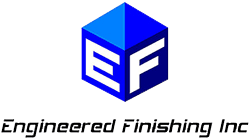To add value to a metal product and improve its overall appearance, manufacturers usually take advantage of specialized machining techniques. This helps them to retain existing customers and attract new ones by offering a well-finished product.
Metal finishing involves a wide range of processes, which add a desirable finish to a product. Besides, advanced metal finishing improves the aesthetic value of a product. If you are interested in learning about different metal finishing techniques used by manufacturers, this is the article for you.
Here, we are going to discuss different types of specialized machining and metal finishing processes.
These include:
- Powder Coating
- Anodizing
- Electro-Polishing
- Blasting
- Vibratory Finish
Powder Coating
There are several ways to improve the metal finishing and powder coating is one of them. This technique involves various types of processes to get the job done. The selection of coating can make a difference. This is the reason why powder coating tends to be more popular than any other type of coating.
Powder coating is a dry finish, which is achieved by applying dry powder to the metal through a process called Electrostatic Spray Deposition (ESD). After applying the powder, the treated metal part is placed in an oven to secure the powder coating and enhance its life.
Usually, this type of finish is used for metal products that are exposed to heat, moisture, or a rustic environment. In addition, powder coating is also used for various other applications. For example, powder coating is also applied to décor elements.
Anodizing
Apart from regulatory requirements, manufacturers also pay attention to consumer expectations. As a result, they are now shifting to sustainable and advanced metal finishing techniques. Hence, manufacturers search for ‘Greener’ options to treat their metal products.
This is the area where Anodizing comes into play. It is a specialized technique used for finishing a product. Anodizing helps to create a coating from the base metal, which is then used to add some colored finishes. This is done by applying different types of additives.
Anodizing is a safe process, as it is a water-based process. So, there is no issue of generating Volatile Organic Compounds (VOCs). This procedure not only offers a great finish to the metal but also offers corrosion-resistant properties.
Electro Polishing
It is one of the most advanced metal finishing techniques used for specific types of base materials. For instance, this process is generally used with alloys or stainless steel. During this finishing procedure, a thin layer of metal is removed to make the surface shiny and smooth.
Electropolishing is a process that is performed with the help of different chemicals. For instance, stainless steel products are electropolished using a high-viscosity mixture of phosphoric acid and sulfuric acid.
Blasting
Blasting is a specialized machining technique that usually works with sand. It is widely used to give a clean and smooth finish to a metal surface. Blasting also serves as an effective way to create a matte texture on soft metals.
Shot peening is a variation technique used in blasting, which adds more strength to the metal. This process makes metals resistant to stress and fatigue. During this process, compressive stress is created to counteract a metal’s tensile stress.
Blasting also proves to be an effective technique used during the preparation of a metal surface. It gives a smooth finish to a rusty piece of metal. Blasting can remove different types of coatings, including paint or powder finish.
Below are the two of the widely used blasting processes:
- Wheel Blasting
- Air Blasting
1. Wheel Blasting
This process involves different types of shot-blasting machines. Being an advanced metal finishing technique, blasting offers outstanding results. Wheel blasting technology helps remove both rust and heat-treat scale effectively and economically. This process is suitable for a variety of materials and different-sized metal parts.
This process uses different machines, including:
- Batch tumble blast machine
- Indexing rotary table machine
- Indexing spinner hanger machine
2. Air Blasting
Air blast technology is widely used by reputed machining and metal finishing experts like Engineered Finishing. Usually, automated indexing blast stations are used for exceptional finish. In addition, equipment like rotary baskets are also used for this process.
Leading surface enhancers perform air blasting with ceramic beads, glass, plastic media, and aluminum oxide. You can also ask for a specialized machining technique like wet blast processing. Using metallic media offers better outcomes with shot-blasting equipment.
Vibratory Finish
This is another advanced metal finishing process. It is done by placing metal parts into a vibratory bowl or tub. Media and compounds are added to the vibratory tub to add the required finish and shine. With a constant vibratory motion, a force is applied on the parts, which offers a clean and shining surface.
The vibration of different parts causes a grinding impact on the surface of a metal part. As a result, you get a polished or deburred surface. Vibratory finishing techniques can also be helpful while descaling a surface or removing its rusted/corroded layer.
The vibratory finish helps achieve different outcomes, including burnishing, deburring, cleaning, and deflashing. For instance, ball burnishing makes a surface bright, shiny, and smooth. In addition, this process also performs deburring of the metal parts.
Deburring is performed using plastic and ceramic media, which makes it possible to remove hanging burrs and sharp edges. Speaking of cleaning the ferrous or non-ferrous materials, amazing results can be achieved through a vibratory finish.
Engineered Finishing Inc. uses a patented Keramo-Finish process, which polishes and refines the overall finish of a metal part. For instance, you can expect a high polished and mirror-bright finish. In short, a vibratory finish is one of the most promising and unique machining methods.
Final Thoughts
Manufacturers are always finding unique machining methods to give a perfect finish to their metal products. This is why innovative and specialized techniques always impress these manufacturers. For instance, automated finishing machines are offering promising results.
For instance, automated and specialized machining techniques enhance accuracy and minimize waste while working on metal. This feature assists machine shops and manufacturers to get uniform results even with different metals. To sum up, if you want a consistent and elegant finish, make sure to rely on precision manufacturing techniques.






